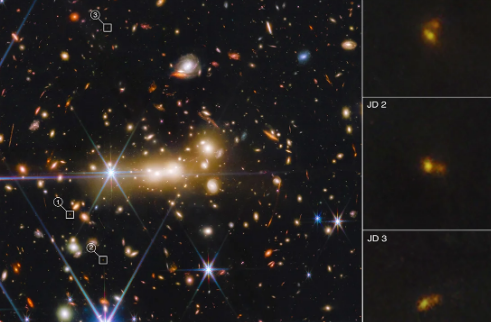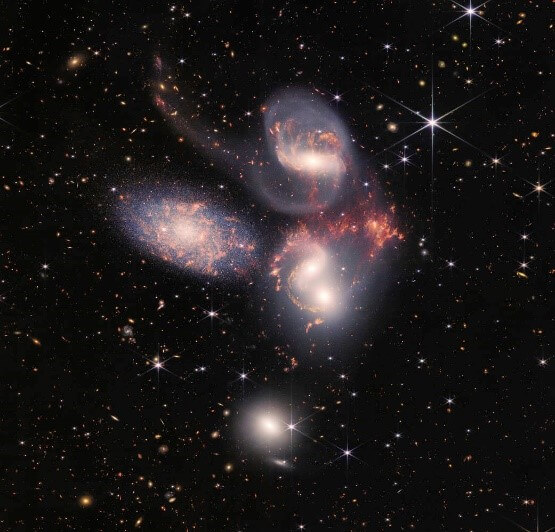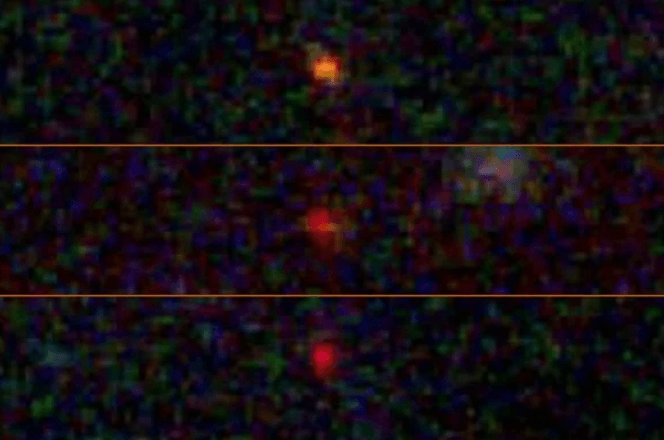
Since its launch, the James Webb Space Telescope (JWST) has continually amazed us with its ability to delve deeper into the cosmos, uncovering the mysteries of our universe. With its advanced technology and capabilities, this space telescope promises to revolutionize our understanding of the universe and unveil mysteries that were previously unimaginable. In this article, we will explore the top 5 discoveries made by the James Webb Space Telescope, demonstrating how it is broadening our horizons and allowing us to explore the unseen universe.
You will also like – 100 Amazing Science Facts That Will Blow Your Mind
717 Ancient Galaxies
The JWST’s powerful capabilities have allowed us to observe the most distant galaxies ever seen. By capturing light from galaxies formed just a few hundred million years after the Big Bang, the telescope has given us a glimpse into the early stages of the universe. These 717 ancient galaxies and their characteristics enable scientists to study the evolution of galaxies and understand more about the formation of stars and galaxies in our universe.

Exoplanet Atmospheres
One of JWST’s key missions is to study exoplanets and investigate whether habitable conditions exist beyond our solar system. By analyzing the atmospheres of exoplanets, the telescope can identify potential signs of life. So far, the JWST has identified various exoplanets with atmospheres that contain water vapor and other crucial elements for life. These findings offer exciting possibilities for future exploration and the search for extraterrestrial life.

Also Check – Discover the Top Life-changing Brain Breakthroughs of 2023 So Far!
Black Hole Evolution
The JWST is capable of studying supermassive black holes that exist at the centers of galaxies. By observing the behavior of these cosmic behemoths over time, the telescope enables scientists to understand their growth and how they influence their surrounding environment. The data collected by the JWST has allowed scientists to gain new insights into the relationship between black holes and their host galaxies, helping to unravel the mysteries of the universe’s most enigmatic phenomena.

Stellar Birth and Death
The JWST’s advanced infrared detectors and precise imaging capabilities are ideal for studying stellar nurseries – regions where new stars are born. These observations provide astronomers with crucial insights into the processes governing star formation and the evolution of stellar systems. Additionally, the telescope has helped to shed light on the life cycle of stars, including their explosive deaths as supernovae and the formation of neutron stars and black holes.

Dark Matter and Dark Energy
A significant portion of the universe is composed of mysterious dark matter and dark energy, whose nature remains elusive. The JWST plays a crucial role in studying these phenomena by observing the gravitational lensing of distant galaxies caused by the bending of light due to the presence of dark matter. By mapping this gravitational effect, scientists can gain a deeper understanding of the distribution and properties of dark matter, alongside studying the mysterious force of dark energy, which drives the expansion of the cosmos.

The James Webb Space Telescope represents a significant milestone in our quest to explore the universe beyond what we can currently observe. By exploring the unseen and making groundbreaking discoveries, such as ancient galaxies, exoplanet atmospheres, black hole evolution, stellar birth and death, and dark matter and dark energy, the James Webb Space Telescope is expanding our knowledge of the cosmos to unprecedented levels. As this space marvel continues to unlock new aspects of our existence, its contributions are poised to shape our understanding of the universe for generations to come.




































